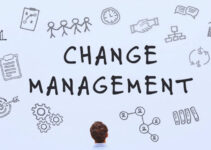Nestle is a food and drink-producing and processing Swiss multinational conglomerate brand. Henri Nestle established the food and drink company in 1866. Today, we’ll discuss the McKinsey 7S framework of Nestle as 7S framework in strategic management and change management; strategy, structure, system, staff, skill, style, and shared values of McKinsey 7S model with Example Company.
Products and Services of Nestle
- Soups
- Sauces
- Refrigerated food
- Confectionary items
- Baby food
- Pet food
- Breakfast cereal
- Milkshakes
- Bottled water
- Frozen food
- Coffee
- Dairy products
- Infant food
- Seasoning
- Medical food
- Snacks
Statistical facts and figures of Nestle
- Nestle earned annual revenue of 94.424 billion CHF in 2023
- Out of which, the net income of the food and drink brand was 9.596 billion CHF
- Nestle employed Approximately 308,000 employees to manage its operations
- Nestle has established 447 factories and manufacturing units in approximately 190 countries worldwide
- Ranked at the 64th position on the Fortune 500 Companies List
Subsidiaries of Nestle
- Excella Gold
- G Balance
- Good Care
- Cerelac
- SMA Nutrition
- Alfare
- Lactogrow
- Materna
- Bobo Frut
- Cognita Gold
- Gerber
- Nature Nestle
Top Competitors of Nestle
- Gruma
- Starbucks
- ConAgra Food
- Kraft Food Group
- Danone
- Mondelez and Mars
- Unilever
- Monster Beverage Corporation
- The Kellogg Company
- General Mills
- Bimbo Bakeries
- Coca Cola
- Pepsi
McKinsey 7S framework of Nestle would analyze the elements of the 7S framework in strategic management and change management; strategy, structure, system, staff, skill, style, and shared values. Here’s the Nestle McKinsey 7S framework as follows;
McKinsey 7S Framework of Nestle
Let’s discuss the McKinsey 7S framework of Nestle as a 7S framework in strategic management or McKinsey 7S model with Example Company as follows;
Strategy of Nestle
I-Value Chain Model
Nestle follows the value creation model or adds value to the lives of customers through its products and services. According to an estimate, the company offers more than 8000 products and services in various categories to different markets across the world.
II-Sustainability
Nestle has established a well-diversified product portfolio both in terms of category and geography. The cultivation and development of regional, local, and global brands have helped the company achieve significant growth in the long term. The company focuses on achieving sustainable growth through the following elements;
- Portfolio management
- Market share increment
- Rapid innovation
- Organic growth rate
III-Operational Efficiency
Nestle achieves operational efficiency through cost efficiency and growth management at different levels of business. It allows the company to save resources and reinvest them in other areas;
- Sustainability initiatives
- Digitalization
- Branding and marketing
IV-Resource Allocation
While adding shared values and returns for shareholders, Nestle invests its resources in long-term business growth and development. The long-term growth comprises of following;
- Supporting organic growth
- Building factories
- Branding
- R&D investment
Structure of Nestle
I-Division
Nestle follows the geographic divisional structure by moving from complicated decentralization. Every geographic division has the obligation to achieve sustainable growth and agility. Some of the main divisions of Nestle are as follows;
- Greater China
- Asia, Oceania, and Africa
- Europe
- Latin America
- North America
II-Cost structure
The cost structure of the consumer brand is tending towards distribution and marketing. It deals with a significant portion of the liquid and powder-based product business. According to an estimate, they generated a revenue of roundabout 25 billion Swiss Francs.
System of Nestle
I-Multiple Systems
Nestle is the world’s leading food and drink producing and processing company and it comprises of following systems;
- IT and Digital Systems
- Nutrition profiling system
- Performance appraisal
- Recruitment and selection
The regional and divisional head performs the recruitment and selection process. The selection and standardization criteria are based on the plan needs and requirements located in the particular region.
Staff of Nestle
Nestle employed approximately over 275,000 employees to manage its global operations. Some of the main elements of Nestle’s workplace culture and activities that the company is involved in are as follows;
- Empowering Cocoa farmers for better productivity of crops
- Gender balance in the management position by hiring a female global chief marketing officer
- Promoting cultural diversity in the workplace and society
- Sustainable operations
- Gender equality in the workplace
Skill of Nestle
I-Tech Expertise & Equipment
Tech expertise and the latest tech equipment are the main competitive reasons behind the worldwide growth and development of Nestle. The company focuses on continuous technological improvement and other work processes to meet and satisfy international standards.
Style of Nestle
The leadership and workplace style of Nestle is to shape the future based on daily activities and actions. It comprises of following elements;
- Driving change with innovation and accepting challenges
- Developing and growing by developing a place to learn
- Expanding the company’s portfolio
- Making an impact on people’s lives
Shared Values of Nestle
Nestle focuses on integrating local indigenous knowledge and global resources to add value for the shareholders and society at the mass scale. The company believes in doing business as a force of good. The brand has committed to adding value through the following;
- Improved nutrition
- Sustainable packaging
- Deforestation-free supply chain
- Regenerative agriculture
- Zero greenhouse gas emission
Conclusion: Nestle McKinsey 7S Framework in Strategic Management |McKinsey 7S Model Example Company
After an in-depth study of the McKinsey 7S framework of Nestle; we have realized that Nestle is the world’s leading food and beverage company. If you are learning about the Nestle McKinsey 7S framework in strategic and change management; then you should keep in mind the abovementioned strategy, structure, system, staff, skill, style, and shared values of the McKinsey 7S model with Example Company.
Ahsan is an accomplished researcher and has a deep insight in worldly life affairs. He goes Live 3 days a week on various social media platforms. Other than research writing, he’s a very interesting person.


